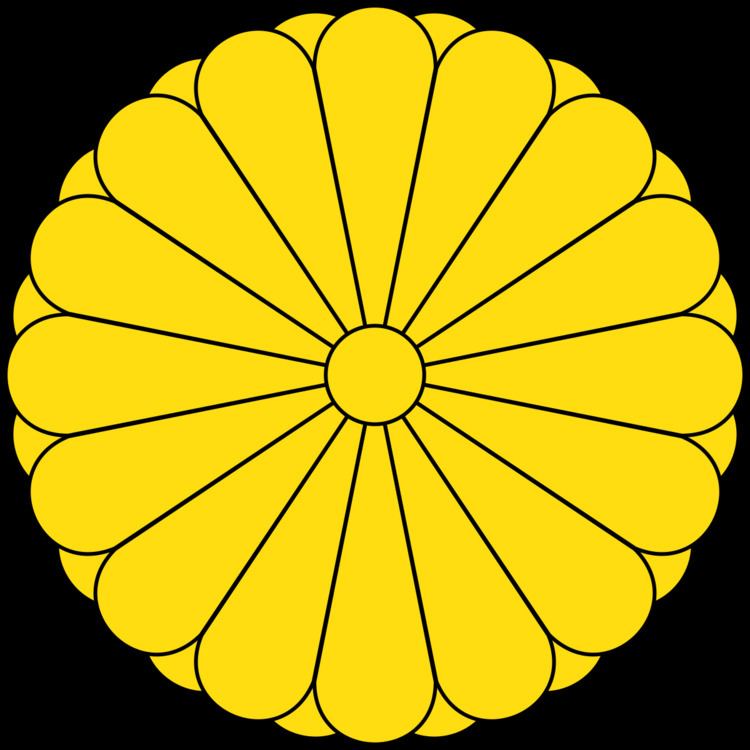Reign 785–806 Predecessor Kammu Siblings Emperor Saga Enthronement April 9, 806 Children Prince Abo | Reign 806–809 Name Emperor Heizei Coronation 785 | |
 | ||
Died August 5, 824 AD, Heijo-kyo Spouse Fujiwara no Tarashiko/Obiko Parents Fujiwara no Otomuro, Emperor Kanmu Similar People Emperor Saga, Emperor Kanmu, Emperor Uda | ||
tomb of the emperor heizei
Emperor Heizei (平城天皇, Heizei-tennō, 773 – August 5, 824), also known as Heijō-tennō, was the 51st emperor of Japan, according to the traditional order of succession. Heizei's reign lasted from 806 to 809.
Contents
- tomb of the emperor heizei
- Traditional narrative
- Events of Heizeis life
- Era of Heizeis reign
- Kugy
- Consorts and children
- References
Traditional narrative
Heizei was the eldest son of the Emperor Kanmu and empress Fujiwara no Otomuro. Heizei had three Empresses and seven sons and daughters.
Heizei is traditionally venerated at his tomb; the Imperial Household Agency designates Yamamomo no Misasagi (楊梅陵, Yamamomo Imperial Mausoleum), in Nara, as the location of Heizei's mausoleum. The site is publicly accessible. Although one of the largest kofun monuments in Japan, archaeological investigations in 1962–1963 indicate that it was constructed in the early 5th century, and that portions of it were destroyed during the construction of Heijo-kyō, calling into question the designation by the Imperial Household Agency.
Events of Heizei's life
Before he ascended to the throne, his liaison with Fujiwara no Kusuko, the mother of his one consort, caused a scandal. Because of this scandal his father considered depriving him of the rank of crown prince.
His title Heizei was derived from the official name of the capital in Nara, Heizei Kyō.
During Heizei's reign, the bodyguards were reorganized; the existing Imperial Bodyguards became the Left Imperial Bodyguards, while the Middle Bodyguards became the Right Imperial Bodyguards. Both sides were given a new Senior Commander; at this time Heizei appointed Sakanoue no Tamuramaro (758–811) as Senior Commander of the Imperial Bodyguards of the Right. Under Emperor Kanmu, Tamuramaro had been appointed as shogun of a military expedition against the Emishi.
Era of Heizei's reign
The years of Heizei's reign are encompassed within one era name (nengō).
Kugyō
Kugyō (公卿) is a collective term for the very few most powerful men attached to the court of the Emperor of Japan in pre-Meiji eras.
In general, this elite group included only three to four men at a time. These were hereditary courtiers whose experience and background would have brought them to the pinnacle of a life's career. During Heizei's reign, this apex of the Daijō-kan included:
When the daughter of a chūnagon became the favored consort of the Crown Prince Ate (later known as Heizei-tennō), her father's power and position in court was affected. Kanmu disapproved of Fujiwara no Kusuko (藤原薬子, d. 810), former wife of Fujiwara no Tadanushi; and Kanmu had her removed from his son's household. After Kanmu died, Heizei restored this one-time favorite as part of his household; and this distinction had consequences.
Consorts and children
Empress (posthumously elevated Kōgō): Fujiwara no Tarashiko (藤原帯子) (?–794), also known as Taishi, daughter of Fujiwara no Momokawa
Hi: Imperial Princess Asahara (朝原内親王) (779–817), daughter of Emperor Kanmu
Hi: Imperial Princess Ōyake (大宅内親王) (?–849), daughter of Emperor Kanmu
Shōshi Court lady (Naishi-no-kami): Fujiwara no Kusuko (藤原薬子, d. 810), former wife of Chūnagon Fujiwara no Tadanushi
Court lady: Fujii no Fujiko/Tōshi (葛井藤子), daughter of Fujii no Michiyori
Court lady: Ise no Tsugiko (伊勢継子) (772–812), daughter of Ise no Ōna
Court lady: Ki no Iokazu (紀魚員), daughter of Ki no Kotsuo
